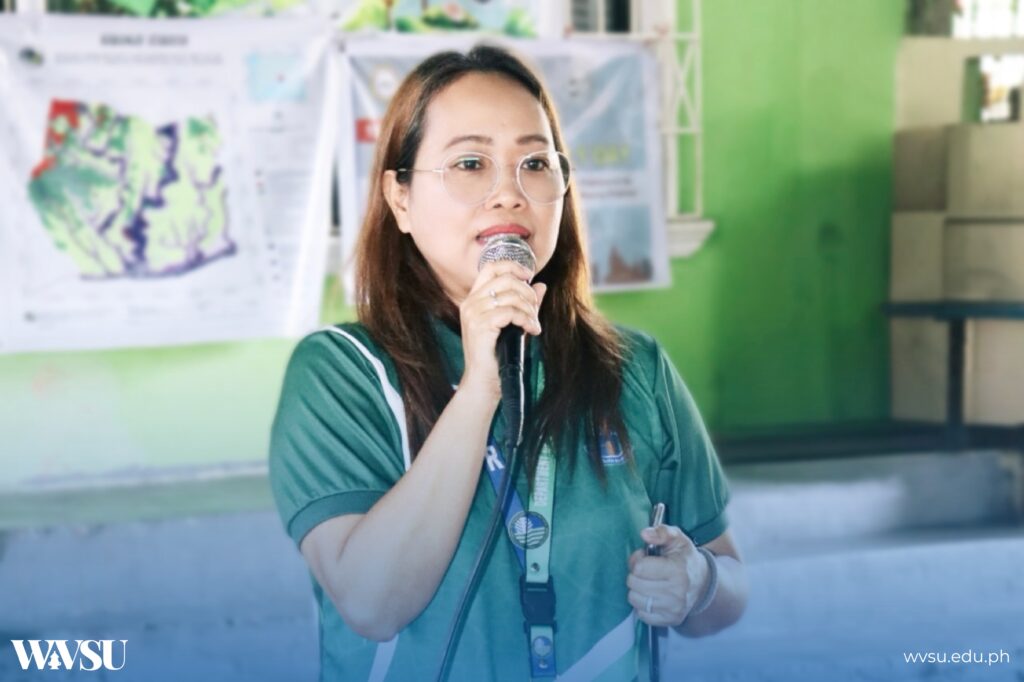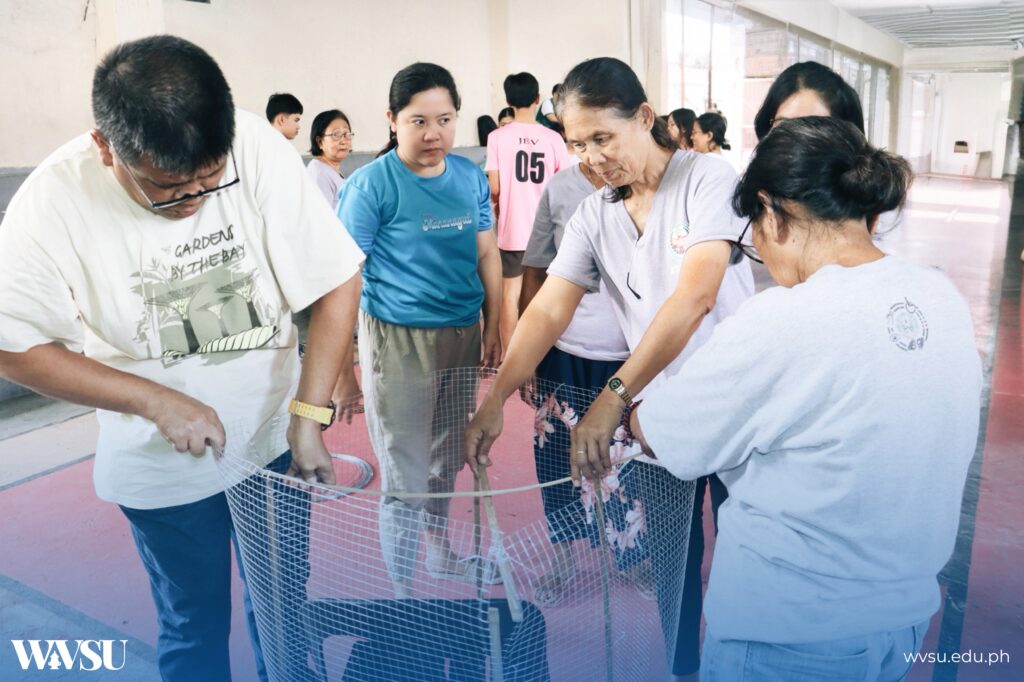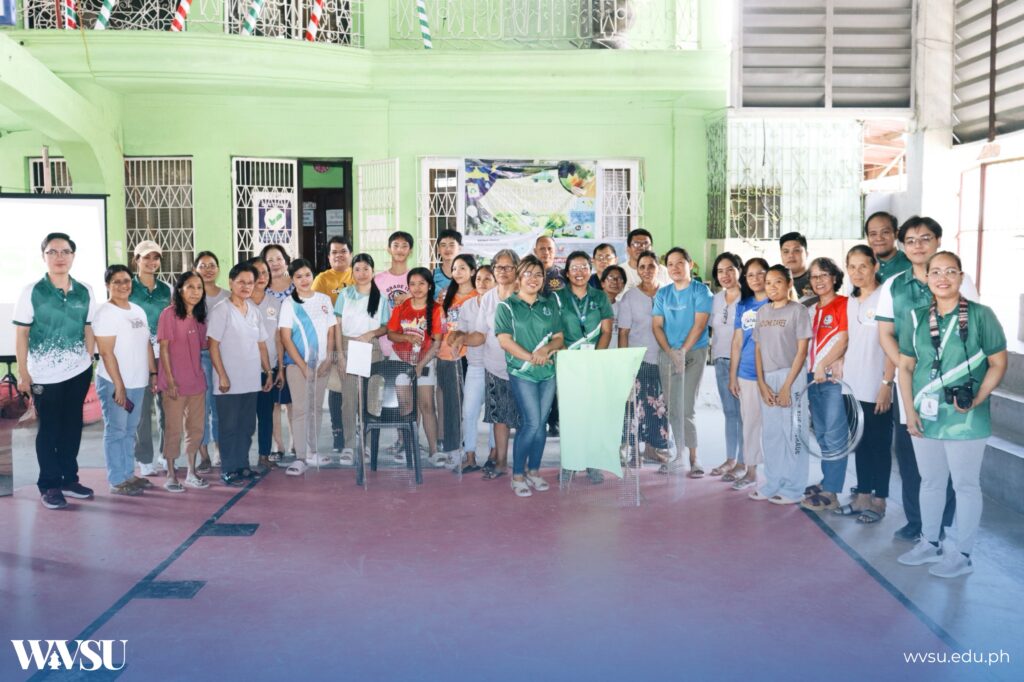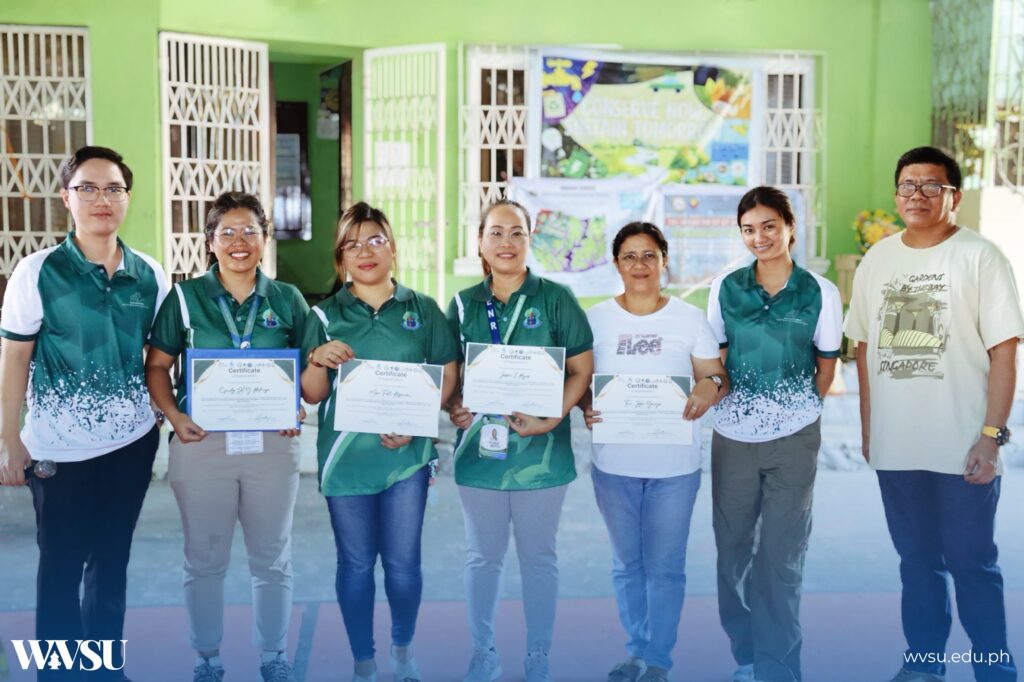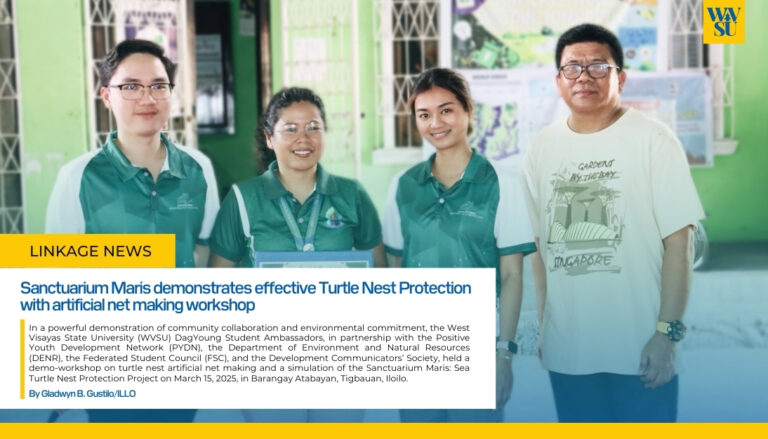In a powerful demonstration of community collaboration and environmental commitment, the West Visayas State University (WVSU) DagYoung Student Ambassadors, in partnership with the Positive Youth Development Network (PYDN), the Department of Environment and Natural Resources (DENR), the Federated Student Council (FSC), and the Development Communicators’ Society, held a demo-workshop on turtle nest artificial net making and a simulation of the
Sanctuarium Maris: Sea Turtle Nest Protection Project on March 15, 2025, in Barangay Atabayan, Tigbauan, Iloilo.
Funded by the Embassy of France to the Philippines and Micronesia, this project underscores WVSU’s strong dedication to sustainability, conservation, and volunteerism. The DagYoung Student Ambassadors, under the International and Local Linkages Office (ILLO), spearheaded the initiative, demonstrating the power of student leadership in driving positive environmental change that benefits both the community and the environment.
Cyndy Sol G. Rodrigo, an Ecosystem Management Specialist II and Regional Alternate Youth Desk Officer of DENR VI, provided the participants with valuable insights into the handling of marine turtles. She emphasized the various situations in which a live marine turtle may need to be handled, including after nesting, during rescue operations, prior to release, or when being rehabilitated.
The workshop also covered the sequential stages of marine turtle nesting, which can take up to six hours to complete. This process involves several steps, such as stranding, crawling from the surf to the nest site, clearing and excavating the nest hole, and laying eggs. Afterward, the nest is filled and camouflaged to ensure the safety of the eggs. In some cases, intervention may be necessary to relocate nests in high-risk areas, particularly when there is a risk of flooding, beach erosion, or predation.
The workshop also included the importance of hatchling emergence, which typically occurs between 45 to 75 days after the eggs are laid. The emergence process, which happens in the late evening, can be slow at first but eventually speeds up as more hatchlings emerge from the nest. To minimize predation risks, it is advised to release the hatchlings in multiple locations, at dusk or dawn, and away from artificial light sources.
Finally, participants learned about citizen science and its role in mapping sea turtle nesting sites. Tools such as smartphones, mobile apps, and paper notes were highlighted as essential resources for gathering data and contributing to the ongoing conservation efforts.
This collaborative effort showcases the power of local communities in protecting marine life and preserving the environment for future generations.
By Gladwyn B. Gustilo/ILLO
